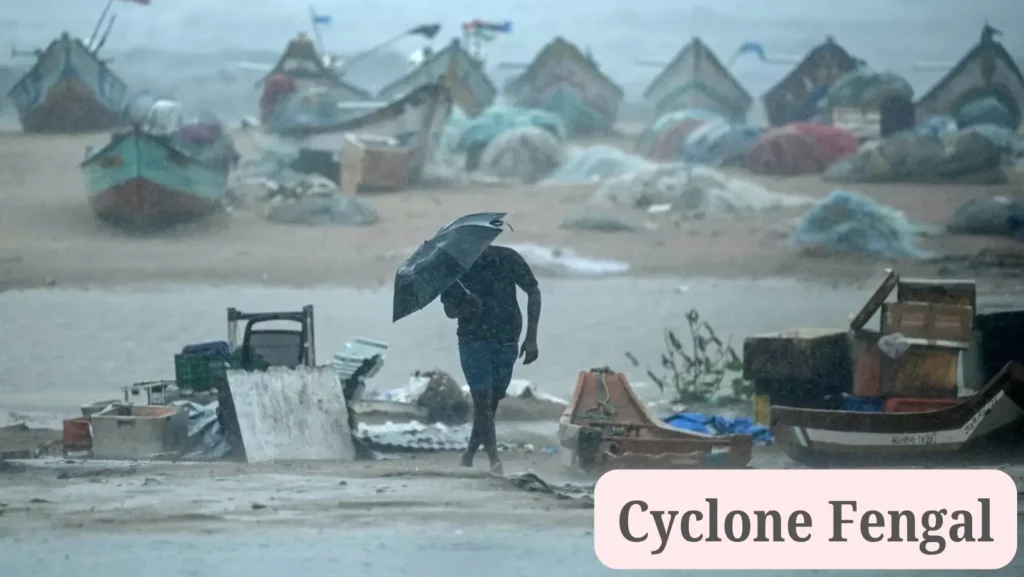Fengal cyclone is currently creating sufficient ripples in Tamilnadu and Puducherry given its possible landfall in the region.
Here’s a detailed explanation of what the name “Fengal” means, how it was chosen, and how cyclones get their name.
What does ‘Fengal’ mean?
No, this is not the name of an exotic dinner option. While it is named after Saudi Arabia, its exact source is unclear, but “Fengal” is thought to represent a strong wind or storm. These names are chosen after deliberation to represent regional languages or natural phenomena and to be easy to pronounce and understand.
Who named Cyclone Fengal?

The name Cyclone Fengal was given by Saudi Arabia. The process is overseen by the World Meteorological Organization (WMO) and the United Nations Economic and Social Commission for Asia and the Pacific (UNESCAP). These countries include India, Bangladesh, Sri Lanka, and Oman, and the organizations are responsible for naming cyclones in the Indian Ocean region.
How are Cyclones Named?
The naming of cyclones is a systematic and collaborative process:
- Regional Cooperation: 13 nations from the Indian Ocean region offer cyclone names.
Countries provide a list of names that are used in order. For example, Saudi Arabia’s, “Fengal,” was selected for this cyclone - What the cyclone names must meet: Cyclone names must fit certain criteria;
- The good news is they are easy to pronounce and memorable.
- Relevant to the contributing country’s culture or natural phenomena
- Non-offensive and gender-neutral
- Retirement of a name: Once a name is used for a noteworthy cyclone, it is retired so that confusion or distress doesn’t arise in the future. For example: names that have been used for cyclones of destruction such as those of Cyclone “Fani” (2019) and Cyclone “Amphan” (2020) are no longer in use.
The history of cyclone naming
It was in the 1950s that the tradition of naming storms emerged, over the North Atlantic. Storms were originally designated by their latitude and longitude, a new system that turned out to be both unwieldy and prone to error. The evidence suggested that assigning names helped improve communication — particularly among meteorologists, the public, and agencies in charge of disaster management — and was thus a more efficient way to coordinate a response.
Starting in 1979, the North Atlantic started alternating male and female names in alphabetical order. Today, each region has its own naming conventions, but all serve to increase public awareness and preparedness. For the Indian Ocean, cyclonic storms were given names since 2004, as agreed by a 2000 WMO/ESCAP meeting at Muscat in Oman.
Why do Cyclone Names Matter?
Naming cyclones helps in:
- Making it easier for meteorologists, disaster response teams and the public to communicate.
- Make the public aware and respond quickly during an emergency.
- Helping with historical research and climatological archives on storm patterns and impacts.
- Expected Impact: Heavy to very heavy rainfall is likely in seven districts of Tamil Nadu including Chennai, Tiruvallur, Chengalpattu, Kancheepuram, Villuppuram, and Puducherry. There could be particularly torrential rain in isolated areas.
- Wind Speed: Wind speeds will be between 70–80 km/h while gusts will be up to 90 km/h at landfall.
- Travel Disruptions: The inclement weather has already caused flight cancellations and travel advisories for Chennai and nearby regions. According to IMD, fishermen should refrain from entering the sea.







